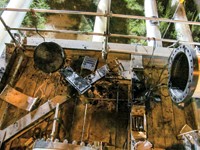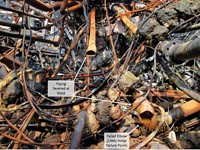Advertisement
Grab your lab coat. Let's get started
Welcome!
Welcome!
Create an account below to get 6 C&EN articles per month, receive newsletters and more - all free.
It seems this is your first time logging in online. Please enter the following information to continue.
As an ACS member you automatically get access to this site. All we need is few more details to create your reading experience.
Not you? Sign in with a different account.
Not you? Sign in with a different account.
ERROR 1
ERROR 1
ERROR 2
ERROR 2
ERROR 2
ERROR 2
ERROR 2
Password and Confirm password must match.
If you have an ACS member number, please enter it here so we can link this account to your membership. (optional)
ERROR 2
ACS values your privacy. By submitting your information, you are gaining access to C&EN and subscribing to our weekly newsletter. We use the information you provide to make your reading experience better, and we will never sell your data to third party members.
Industrial Safety
Confusion, lack of safety concern led to three deaths at Packaging Corporation of America mill
Crack in tank allowed flammable vapor to reach welders above
by Jeff Johnson
April 24, 2018
| A version of this story appeared in
Volume 96, Issue 18

A company’s internal confusion and lack of concern for safety caused the deaths of three workers and injuries to seven others last year at the Packaging Corporation of America (PCA) container board mill in DeRidder, La. In a report released today, the U.S. Chemical Safety & Hazard Investigation Board (CSB) urges that tanks holding liquids at atmospheric pressure, such as the one that exploded at PCA, be regulated. Alternatively, companies should voluntarily take adequate safety precautions, CSB says.
On Feb. 8, 2017, welders above a leaking 380,000 L waste tank likely provided a spark that set off an explosion. The tank flew over the top of a six-story building and landed 114 m away. The people who died were all contract workers conducting routine maintenance during an annual shutdown.
The welders were repairing water lines above a pulp waste tank that held a mix of water, sulfuric substances, and residual turpentine. Most of the turpentine had been stripped during manufacturing processes, and the waste tank was intended to hold only small amounts of the hydrocarbon.
But because of a company dispute over who was responsible for skimming and removing the residual turpentine, the tank instead held an unusually large amount of turpentine—a fact that the welders working above it did not know. Turpentine is immiscible in and less dense than water, so it separated to rest on top of the waste mixture.
Additionally, a crack in the tank allowed air to mix with flammable vapor in the tank. The crack also likely provided a pathway for vapor to extend between the tank and the welders working above, permitting a welder’s spark to ignite the tank contents.
“Hot work, such as welding, conducted around tanks containing flammable materials can be catastrophic,” says CSB chairperson Vanessa Allen Sutherland. “That is why it is so important for companies to effectively identify, evaluate, and control potential hazards prior to initiation of hot work.” CSB first identified atmospheric tanks as a potential hazard in 2002.
Sutherland reiterated a 2002 CSB recommendation issued to the Occupational Safety & Health Administration (OSHA) that the agency include atmospheric storage tanks under its process safety management (PSM) standards if the tanks are connected to a PSM-covered process, which would have included PCA’s tank. Sutherland also recommends that the pulp and paper industry apply PSM principles, even if not required by regulation.
For this accident, OSHA has proposed a fine of $63,375. The company is contesting OSHA’s findings.





Join the conversation
Contact the reporter
Submit a Letter to the Editor for publication
Engage with us on Twitter